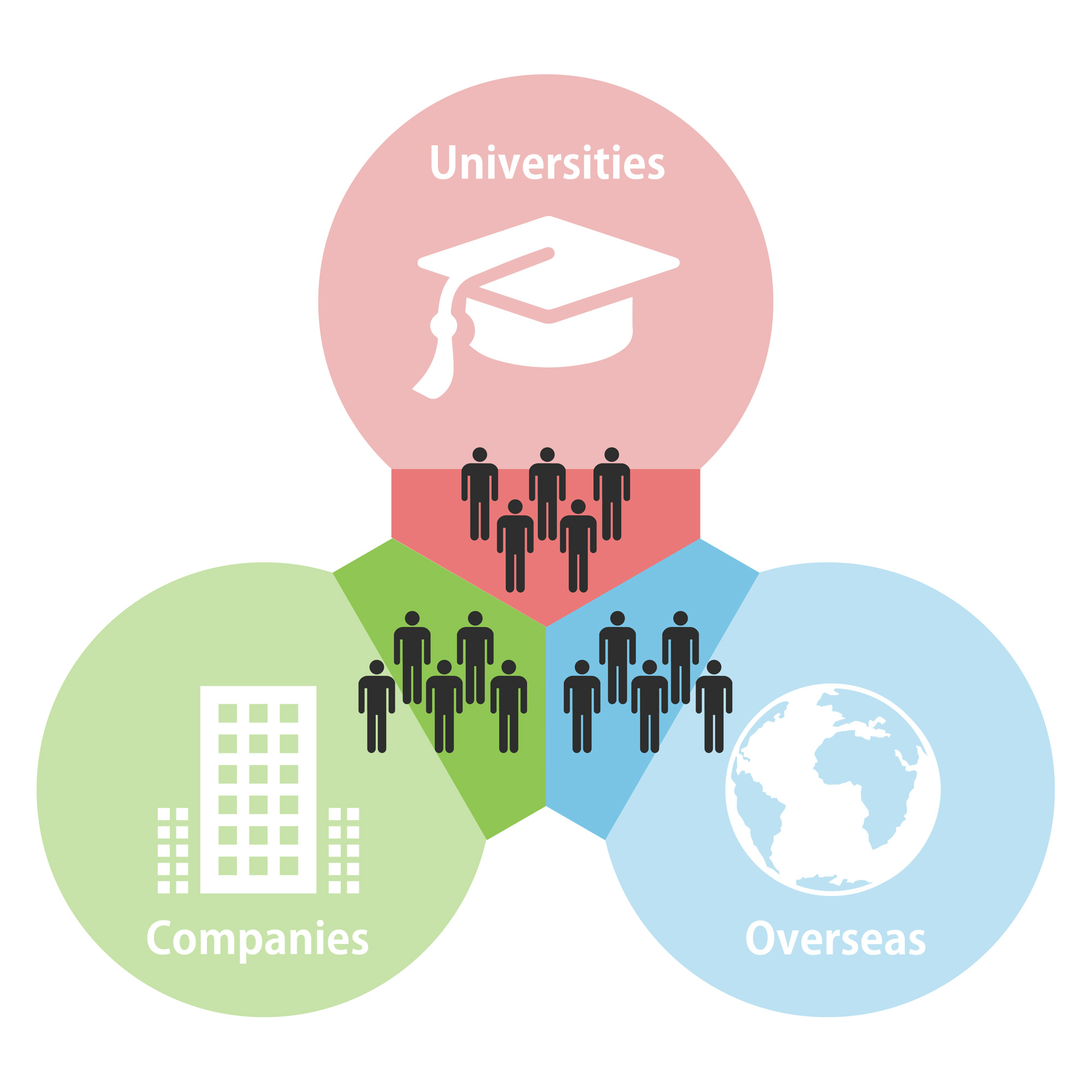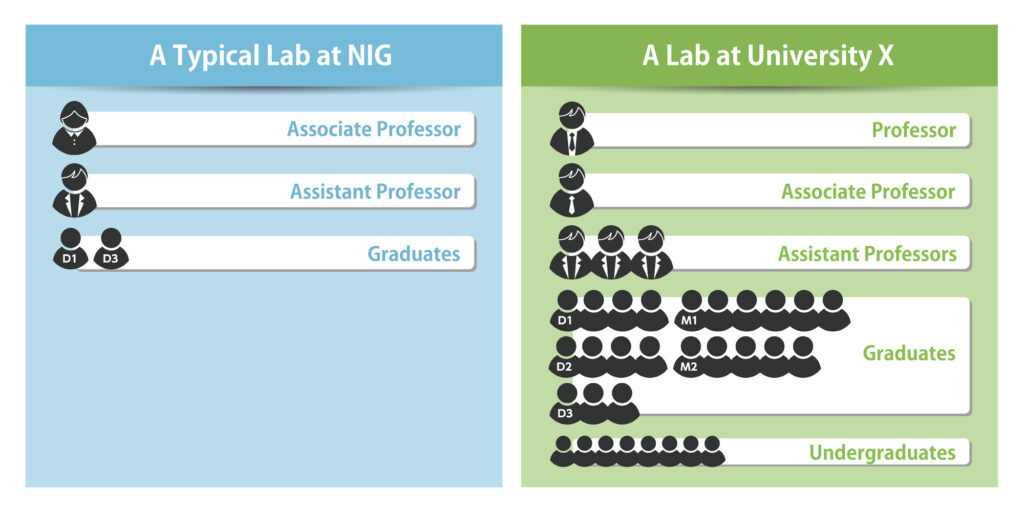Education Philosophy and Distinctive Features
Education Philosophy
As a pioneering research institution with scientists from all over the world, NIG’s research based education is characterized by the frontier research enabled by its outstanding faculty, state of the art facilities, and numerous genetic resources. The Genetics Program also provides programs such as English education and presentation training, aiding students to develop skills needed for pursuing research careers.
Every single student gets the attention of the entire faculty; a thesis committee consisting of faculty from various disciplines is set up for each student.
What’s so good about SOKENDAI Genetics Program?
Small Lab Size
Unlike most other Japanese Universities that retain the “pyramid” lab structure, professors and associate professors organize independent research groups at NIG (Genetics Program). Each group is small; a typical lab consists of fewer than ten people: a principal investigator (professor or associate professor), an assistant professor, a postdoc (if any), one or two graduate students and technicians. Thus, the ratio of faculty to students is extremely high, an average of 1.4 faculty/student. This enables the graduate students to have frequent and in-depth discussions with faculty — something not possible at institutions with an undergraduate program, which must accept several students per faculty every year, not counting undergraduate students!
Team Teaching

In order to raise the objectivity of research, it is important to discuss with faculty members other than the thesis advisor. The Genetics Program has established the unique “Genetics Progress”, which enables students to receive guidance from several faculty members. Each student elects four faculty members outside their own research group as members of their “Progress Committee”, and the committee gives objective advice to students. Moreover, various internal events including poster presentations and retreats are planned to provide students opportunity to discuss with every faculty member and researcher in NIG.
Diverse Courses and Frequent Seminars

The Genetics Program offers more than 100 diverse courses ranging from basic knowledge on biology to advanced science which cannot be classified by existing knowledge. For example, there are classes that center on critical reading and discussion of the primary literature to foster the ability to think and discuss. A large number of seminars covering various fields of life sciences are held at NIG. About 80 “Biological Symposia” featuring eminent scientists from all over the world are held annually. In addition, members of NIG present their progress during the past year at weekly “NIG Colloquia”. Course credit can be obtained by attending these seminars. Graduate students are invited to lunch with seminar speakers, where students have a chance to personally talk with internationally renowned scientists.
In the Student-Initiated Colloquium, students select and host a seminar speaker, so that the experience will enhance their initiatives and organizing skills.
Past Student-Initiated Colloquia
Course on Scientific Presentation

Scientists need skills for logical thinking and effective discussion in English. To enhance these skills altogether, NIG developed an original education program “NIG Method”. This program covers various topics, such as commonly seen errors in scientific settings and small techniques that faculty members learned from their own experience as scientists.
Oral Scientific Communication 1 Syllabus
State-of-the-Art Research Facility

NIG aims to support research activities in the field of Life Sciences as an interuniversity research institute. To achieve this mission, NIG has been enhancing its common equipment and substantial information infrastructure service available for both internal and external users. Graduate students at Genetics Program can fully utilize these equipment and service to further advance their own research. The common equipment ranges from state-of-the-art scientific instruments for genomic analysis and proteomic analysis to microscopes and measuring instruments for in vivo analysis. NIG is also proceeding projects for genomic database, biological resources and supercomputers as part of the information infrastructure service.
Open to Diverse People

The Genetics Program has a multitude of capable students with various backgrounds; not only students from Japanese universities but also international students and researchers working for a company. Our research activities are supported by the interaction among these students with various knowledge and experiences.






















